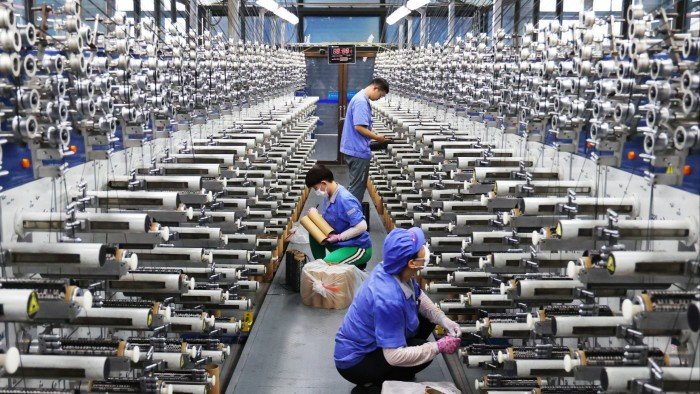Chinese exporters are reconsidering investment in offshore factories as US tariffs on alternative hubs and new restrictions on “transshipment” force a sweeping rethink of supply chains in Asia.
Manufacturers have poured billions of dollars into south-east Asia in recent years as part of a “China plus one” strategy to minimise their exposure to US tariffs in the wake of Trump’s first trade war with Beijing.
But the US has slashed additional duties on Chinese goods to 30 per cent amid trade talks with Beijing, and imposed tariffs ranging from 10 to 40 per cent on other countries in the region.
For the most part, tariffs on south-east Asian countries remain lower than the average levies on Chinese goods, including pre-existing duties and product-specific tariffs. But Trump’s tariff barrage has reoriented the region’s commercial landscape, eating into manufacturers’ margins and undercutting their incentives to invest in moving production away from China.
The latest salvo on Thursday imposed a blanket 40 per cent tariff on goods “transhipped” from China to the US via third countries, casting further doubt on the viability of Chinese investment abroad.
“The China plus one strategy is going to come under tremendous stress,” said Louise Loo, Asia economist at Oxford Economics. Some companies will seek new manufacturing bases further afield, but many would return to China, she added. “The upfront cost to move to new markets is going to be exorbitantly high.”
Many Chinese companies, which had increased overseas investment when Trump imposed 145 per cent tariffs on the country’s goods, said they had been wrongfooted by the increased rates in south-east Asia.
“The domestic tariff policy was uncertain and most of our US customers had strict requirements that we transfer orders to south-east Asia,” said Lin Sijie, a representative for Minyuan Footwear in China’s coastal Fujian province. The company opened a second, larger plant in Cambodia this year.
“But due to the impact of [the latest] tariffs, customers who have not placed orders yet are hesitant to do so in Cambodia,” she added.
That disquiet has extended to buyers. Richard Laub, chief executive of Belgium-based Dragon Sourcing, said an initial “week of panic” from US clients seeking new suppliers in south-east Asia had subsided, and many had chosen to continue buying from China “until the dust settles”.
“It went from getting maybe 10 calls a day . . . to getting a trickle,” he said. Now, clients were closely watching how negotiations between Washington and Beijing and other partners would affect the tariff differential between China and alternative hubs, he added.
“If it turns out that China is at 30 per cent and Mexico is at 20 per cent, they’re not going to move an inch,” he said.
Trump on Thursday said he had extended a temporary 25 per cent “reciprocal tariff” against Mexico for another 90 days. The US and China also held two days of trade talks in Stockholm last week that both sides called “constructive”.
In south-east Asia, the US president imposed a range of “reciprocal” levies ranging, from as low as 10 per cent in Singapore to as high as 40 per cent in Myanmar and Laos. Cambodia, Indonesia, Malaysia, Thailand and the Philippines were subject to 19 per cent levies. Tariffs in Vietnam, one of the largest beneficiaries of China plus one investment, were set at 20 per cent.
Vera Li, sales specialist at Quanzhou Viition Gifts, a lighting and gifts manufacturer with operations in Cambodia and Fujian, said that while 19 per cent still gave Cambodian plants “a little bit of an advantage” compared with China, it brought them in closer competition with producers in Vietnam.
“Now we have to focus on Vietnam,” she said. “[They] are our rivals.”
Bryant Chan, president of Hong Kong-based toy and electronics manufacturer Wynnewood Corp, said the company had begun talks with partners about shifting some orders this year from his plant in Dongguan in southern China to Indonesia to “de-risk” his supply chain.
But the benefits of doing so were eroding, he said. Wynnewood would still need to ship the majority of components from China.
The levies on transshipment meant Wynnewood would also have to shift more of its production processes to Indonesia, significantly increasing costs at a time buyers expected him to share the cost of the new tariffs.
“It’s kind of a double whammy,” he said. “We’re losing on both sides.”
In industries such as high-end fabrics and textiles, however, additional duties will have little effect on China’s dominance, as few countries can match its technological capabilities, said Naveen Jha, who runs a sourcing business in eastern Zhejiang province.
“There’s no rival. Nobody is coming up with the same stuff China has,” he said.
Some Chinese producers who stayed put during Trump’s initial trade onslaught have been feeling smug.
Zhao Fen, who owns four toy factories in Dongguan, said that many of her peers had opened plants in Vietnam, but now “they all regret it”. Rising property costs, less efficient labour and higher tariffs increased costs for many businesses, she said.
She added that the additional burden of tariffs on low-cost Chinese goods were minimal, and had not dented demand from US buyers. “For our goods, in fact, it is basically like there is no tax increase,” she said. “The US seems to be quite friendly to China.”
Adam Fazackerley, operations chief at US-based household goods maker Lay N’ Go, said he had shifted orders to Cambodia this year, but had sacrificed flexibility, efficiency and ease of logistics.
For his next order, he said he would be watching the tariff differential: “If the numbers are close, we’re manufacturing in China.”
Additional reporting by Chan Ho-him and data visualisation by Haohsiang Ko in Hong Kong



